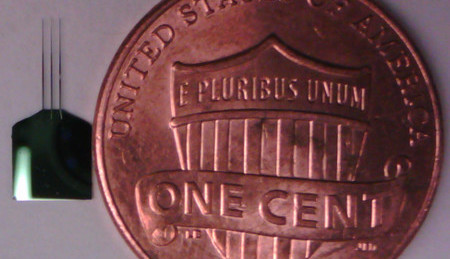Light on a dark brain

In order to map how a living brain works 'from the inside', researchers have used all kinds of sensors, initially simple electrodes and later advanced multi-electrode arrays. Not long ago researchers began to examine the brain functions of animals with the aid of light; this relatively new research area is called optogenetics. The light that comes from an optical sensor, can stimulate genetically modified neurons in the brain so that the function of those can be mapped.
But optical sensors too have their limitations. The light that is used to excite them can illuminate too many neurons at the same time, which makes it difficult to target specific groups of neurons.
Researchers from the California Institute of Technology (Caltech) have now developed a new type of optical brain sensor based on nano technology and the same optical communication techniques that are used to carry Internet data worldwide. These extremely thin probes, based on silicon, can send light deep into the brains of laboratory animals and exactly stimulate specific groups of neurons that control perception, behavior and body functions.
The genetic modification of the neurons means that they produce specific proteins. In this way, the neurons that produce channelrhodopsine can be influenced with blue light, and neurons that produce halorhodopsine with yellow light.
